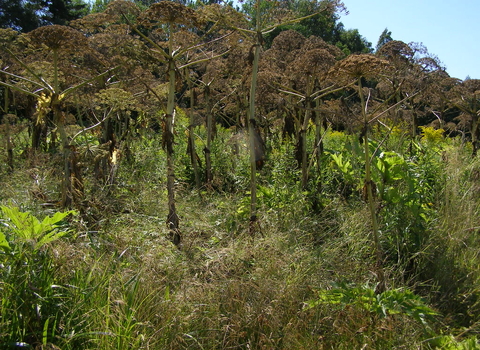
©Eva Ekeblad
Giant hogweed
As its name suggests, giant hogweed it a large umbellifer with distinctively ridged, hollow stems. An introduced species, it is an invasive weed of riverbanks, where it prevents native species from growing.
Enw gwyddonol
Heracleum mantegazzianumPryd i'w gweld
June to AugustSpecies information
Ystadegau
Height: up to 5mInvasive, non-native species.
